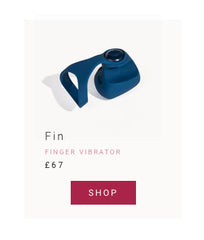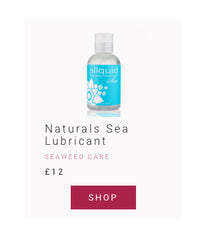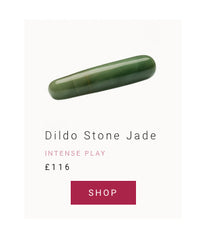Do You Have Body Safe Sex Toys?
Would you use a shampoo or a cream with parabens? Do you still use diet products containing aspartame, even though we’ve discovered that it could cause cancer?

Did you start using headphones when rumours about the dangerous side effects of long phone calls started spreading?
I’m betting that you now probably check labels or use organic cosmetics, that you quit using diet products and moved on to ones containing stevia, and that you’re using headphones pretty much all the time.
Why is this different when it comes to sex toys?
There are probably two reasons:
- You never thought there could be toxic vibrators out there.
- Nobody ever raised the question about toxic material in sex toys.
Unfortunately, it all goes back to the fact that talking about sex and almost everything sex-related is still taboo. But toxic materials are still used in the production of sex toys, especially for cheap ones, and customers don’t know how and why they can be dangerous.

Even though we made some progress in the past 3 years, it’s a fact that the sexual wellness market is not yet recognised by official bodies as the fastest growing and multi-million market that it is (valued at $40 billion by 2020). Therefore, they have never regulated or imposed certain standards to producers.
This doesn’t have to scare you, though. Despite the lack of imposed regulations, many well established brands (like Lelo, JimmyJane, JeJoue, Crave, just to mention a few) as well as newer start-ups (MysteryVibe, Dame, Luwi) do care about safety and health and they only create totally body-safe products.
+ Discover
So what does body-safe mean? What are the toxic materials we should stay away from?
There are 2 key elements to establish how safe a sex toy is: porosity and material.
The first one relates to how absorbent the material is; the more porous it is, the less safe the toy is. Why? Vibrators are frequently in contact with body fluids and if the material absorbs the liquids, it becomes very difficult to properly clean them. Hygiene is very important to avoid getting STIs or any kind of infection from sex toys.
The following image shows you the level of porosity of the most common materials vibrators are made of (on the left porous ones, on the right the non-porous):

Speaking of materials, PVC is one of the most common plastics used in the production of toys. Naturally, it is not flexible and doesn’t have a soft touch, so it is treated with phthalates to give the toy a proper shape and flexibility. Recent scientific studies on phthalates revealed that they mess up our hormones, especially estrogen, and can cause cancer. Today, PVC is mostly used in cheap vibrators but it’s always a good practice to screen all the materials before buying any toy.
________________________________________________________________
You may also like: A Guide to your First Sex Toy
________________________________________________________________
Why is there a higher possibility of side effects with sex toys?
We use them in areas characterised by quite absorbent tissues (the vaginal canal or the anus), so if they’re in touch with a toxic substance for a long time, our body is likely to absorb that substance quicker than other areas of the body.
This is also the reason why pureeros selects very carefully the products and brands available on its platform—not only for toys, but also for lubricants and for any other product. Lubes, for example, are all water-based or organic. Toy are all made of medical grade body-safe silicone. We provide only body-safe products because we care about your safety and health.
We have created a "Banned List", which contains all materials we do not accept on pureeros as they can be harmful; our Quality Team selects new products respecting carefully the Banned List.
Phthalates are not the only thing to care about; a recent study done in the US, which started after several bed reviews and claims of rush and itchiness on sex toy blogs, also revealed a high presence of chlorine in some toys. If you experience any of those symptoms, it’s best if you stop using the toy, go see a GP and inform the manufacturer.

Next time you buy a sex toy please think about your health and not only pleasure. It’s way better to have safe sex!!
Have a look at materials, ask the producer, platform or boutique what’s inside the toy and what it’s made of. There are no obligations for them to claim the full list of components, but responsible brands do it in the instruction manual anyway.
Going back to the questions I asked at the beginning of the article, we have recently noticed that Apple or FitBit had to face the same issue a few years ago (ex: the band was causing skin irritation due to silicone). This received huge media coverage. Results? Everybody was aware of silicon components, and they learnt something new and good for their health. Additionally, regulations were applied.
If you are thinking about figures: there are as many Apple Watches in the entire world as there are sex toys in the UK ONLY! FYI, this is approximately 3 millions!
It’s not a relevant matter for some people, though, and it seems we are still not mainstream. So please, spread the word within the wonderful community of sex toy enthusiasts!
Going to check you vibrator?
Look at materials and see if any of the above are mentioned. If it’s body-safe silicone or medical grade silicone (which is grade V and VI), it’s safe. If you are using dildos made of wood, glass, stainless steel or stone, they are non-porous materials and there is usually no need for chemicals to shape them.
Love yourself, buy body-safe.




